Early Verdict
The Hyundai Technology Sapphire isn't a drive for your game library or for heavy use, but it delivers flash-based storage at an HDD price point. The DRAMless design works well for casual computer users that don't install a lot of software but want an enjoyable computing experience for basic tasks.
Pros
- +
Low cost
- +
Simple design
- +
Faster than an HDD
Cons
- -
Unknown endurance
- -
DRAMless design
- -
High power consumption
- -
Weak usage monitoring
Why you can trust Tom's Hardware
Features & Specifications
We've discussed DRAMless SSDs for the last few years, but they are finally coming to market. If you've cruised Newegg's SSD section in the last couple of months, the 240GB Hyundai Sapphire stood out. It's the lowest-priced 2.5" 256GB-class SSD on the market, and at $50, it sells for $20 less than other products. We stumbled across Hyundai at CES and quickly arranged for a sample.
The NAND fabs dream of the day when flash is a part of every OEM system. CPU performance, the amount of system memory, and storage capacity are the big three marketing points for desktop PCs. Flash has gained market share in notebooks, but the percentage of desktops shipping with SSDs is still abysmal. It's a hard sell to convince a casual user to pay more for 256GB of flash than they would pay for a 1TB HDD. It will be easier to market solid-state drives as more casual users become aware of the benefits, but that doesn't mean they will pay significantly more for the technology in a low-cost notebook selling at a large retailer.
In 2015, we learned that OEM system builders had asked the SSD industry to deliver 256GB SSDs in volume for $30 to $40 per unit. At that price, the system builders can promote flash without adding to the cost of the system. In a market where margins are less than $100 per system, any added expense cuts into the profit.
The solution is to streamline the entire SSD for the lowest price point, which begins with the controller. Products like the Samsung 850 series utilize 8-channel SSD controllers. Faster NAND propelled 4-channel controllers into competition with regular 8-channel SSDs, but with lower R&D and manufacturing overhead. Two-channel designs are the next phase. They take advantage of advanced manufacturing processes that include a small amount of SRAM memory inside the controller, which helps eliminate the need for DRAM.
Hyundai Technology is not the same company that builds automobiles, nor is it the previous parent company of Hynix. General Procurement, Inc. (out of Santa Ana, CA) licenses the Hyundai name. The company is new to flash-based products but also sells notebooks along with USB and SD cards. The company makes several general claims about the advantages of its solid-state drives over HDDs, like increased multitasking performance, energy efficiency, file transfer speeds (via Dynamic Write Acceleration), and reliability. Some of the claims don't line up with our initial DRAMless SSD findings.
Hyundai Technology offers both Cobalt and Sapphire SSDs. Both share the same product specifications and warranty information. There is very little data about either series on the website or Newegg's product page.
Specifications
Hyundai Technology lists the Sapphire in four capacities that range from 120GB to 960GB. To date, we've only spotted the Sapphire in 120GB and 240GB capacities.
Get Tom's Hardware's best news and in-depth reviews, straight to your inbox.
The Sapphire 240GB sample we received uses the Marvell 88NV1120 controller. The controller is attractive to vendors because it's a DRAMless part designed to reduce manufacturing and component costs. The product page lists the NAND as 2D TLC / 3D TLC without any technical specifications. We suspect this drive will have a variable BOM (Bill Of Materials), so customers will receive "luck of the draw" components.
On its website, the company lists the sequential read/write performance at 500/300 MB/s. Newegg lists the sequential write performance as 423 MB/s, slightly higher than the Hyundai website, but the retail package lists 430 MB/s. Random performance is not listed on either site or the package. To gain further insight into the Hyundai Technology Sapphire we turned to the Marvell website and our notes from a private meeting that took place in June 2015.
Marvell 88NV1120 Controller Features
The drive uses Marvell's ARM-based 88NV1120 2-channel dual-core controller. This is the first time we've tested the new Marvell controller. It's a fascinating part that can operate in either SATA AHCI mode or NVMe mode over a PCIe 3.0 x1 connection. The NVMe variant uses the 88NV1140 model name.
- SATA 6Gb/s support
- 2 channel / 4 CE
- TA DevSlp support
- Dual-core Cortex R5 CPU’s
- Embedded SRAM with hardware accelerators to optimize IOPS performance
- ONFI3 and Toggle2 NAND support
- 3rd Gen LDPC NANDEdge error-correction: 15nm TLC and 3D NAND support using LDPC technology to boost endurance and reliability
- BGA SSD and M.2/2.5 slim form factor support with thermal optimization and small package size
- 28nm low-power CMOS process
Marvell’s specifications state the company designed the controller for Toshiba NAND, so the Sapphire most likely uses 15nm planar TLC. We've yet to see Toshiba's 3D NAND, called BiCS, in a consumer SSD. We do know that Apple uses the flash in the latest iPhone products. 15nm planar TLC costs less than BiCS, so the low price point verifies our assumption without a firm confirmation.
Pricing And Availability
The Hyundai Sapphire was sold out at the time of writing. Just a few days before, we found the 240GB drive at Newegg selling for roughly $55 and the 120GB model for roughly $40. The drive seems to come and go on Newegg regularly. That's to be expected given the low price point. The $71.99 OCZ TL100 240GB (another DRAMless product) is the closest non-refurbished 256GB-class SSD on Newegg.
Warranty And Endurance
Hyundai Technology covers the Sapphire with a five-year warranty. The company doesn't list any endurance specifications, and that may be something to worry about.
At Computex 2016, a flash controller manufacturer warned us about DRAMless SSDs shipping with low-endurance planar TLC NAND. 1xnm planar NAND has far less endurance than 3D NAND. The vendor told us that some of the new NAND only has 100 P/E cycles.
"Since they are designed for low-cost OEM systems they just have to survive the warranty cycle. In many cases that is one year."
Marvell's 3rd generation LDPC technology increases the endurance far beyond 100 program/erase cycles per cell, but if you write a lot of data, you will want to keep an eye on drive wear. Gamers with large Steam libraries that automatically update may be among the most susceptible.
Monitoring endurance and other SMART attributes may be an issue with this drive. We couldn't find a single program that could read the amount of data written to the flash or the amount of data sent from the host. We tried CrystalDisk Info, SSD-Z, SSD Life, and HDD Sentinel. DRAMless SSDs may require more wear leveling, and they certainly increase the amount of write amplification because they only cache a small amount of flash translation layer on the tiny embedded SRAM. Without a monitoring utility, using this drive is like driving a car without a fuel gauge.
Product Packaging
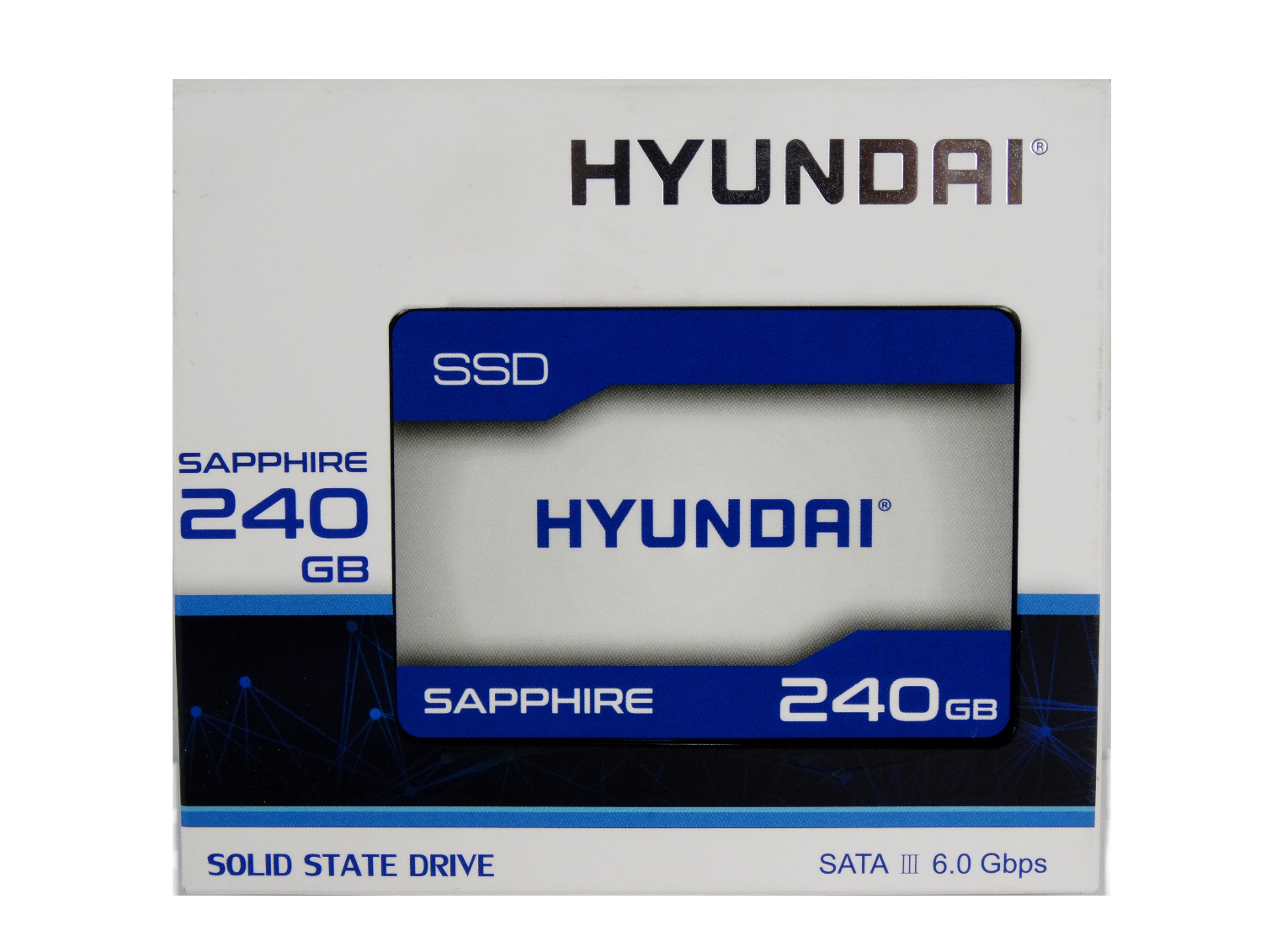
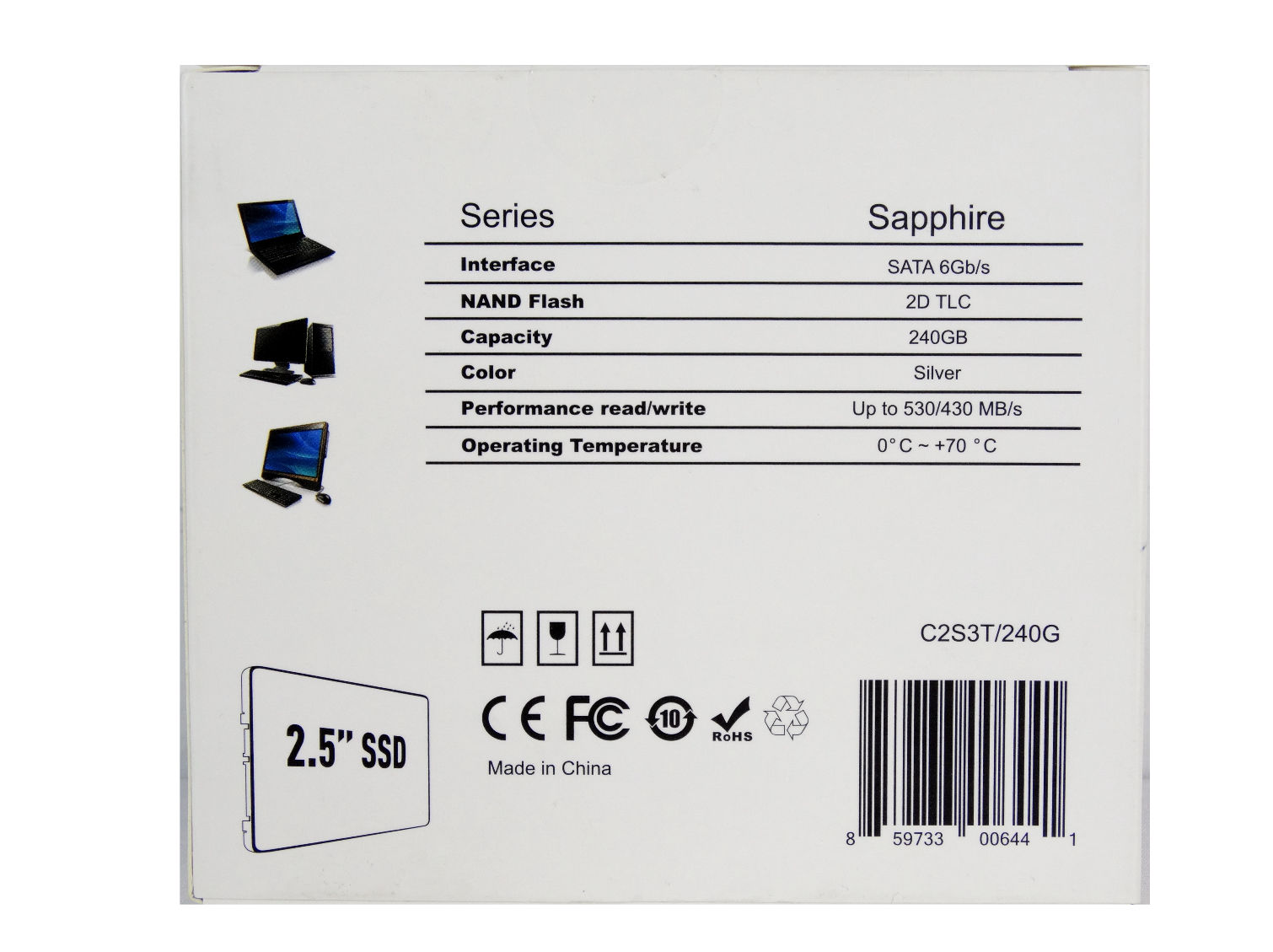
Hyundai put together an attractive package for the Sapphire, but it lacks basics that we like to see, like warranty information. Nearly all these drives will sell through online retailers until Hyundai gains some brick and mortar exposure. Before that happens, retailers will step in and insist upon warranty information on the package. Many retailers have policies that require such information.
A Closer Look
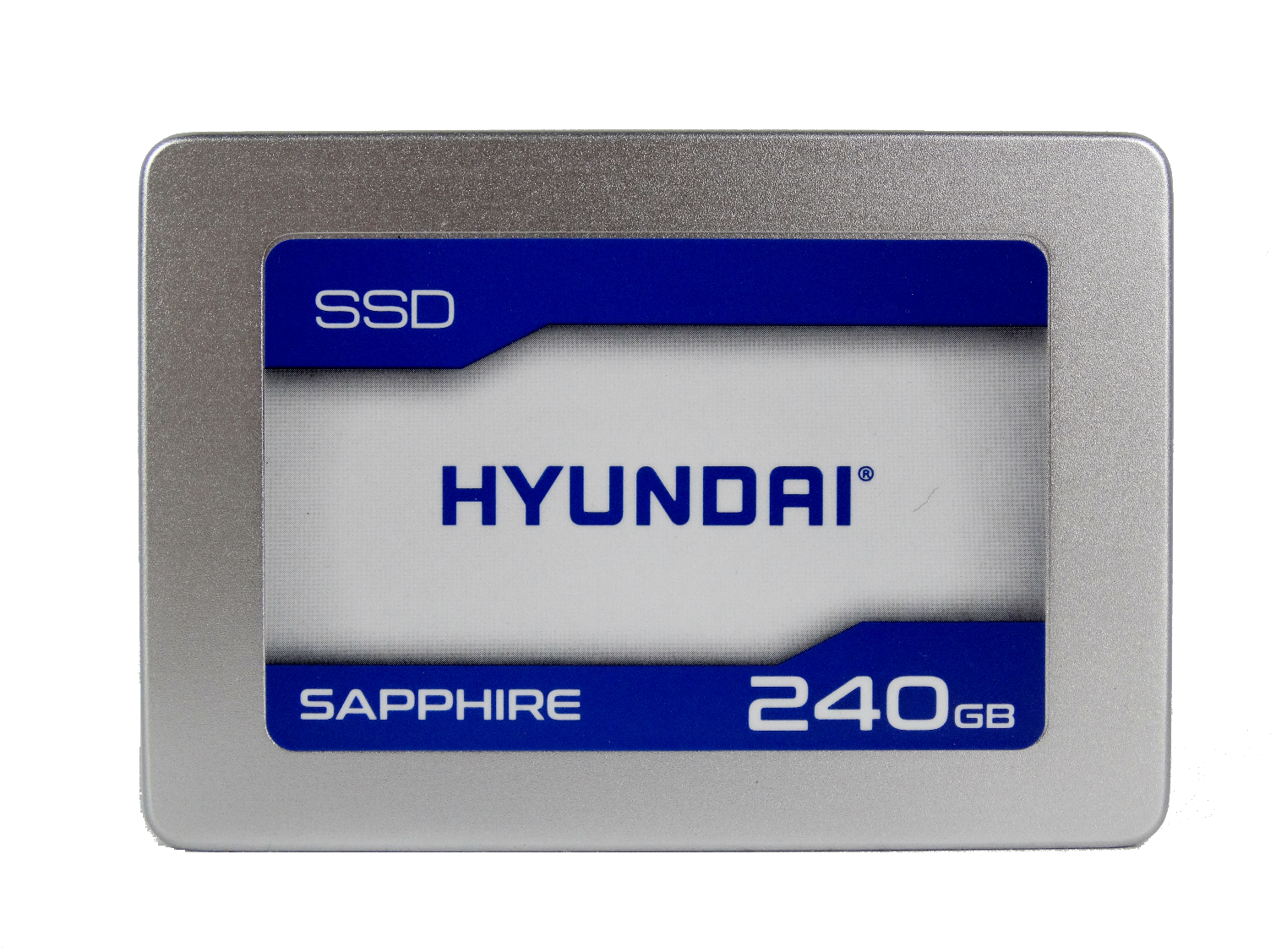
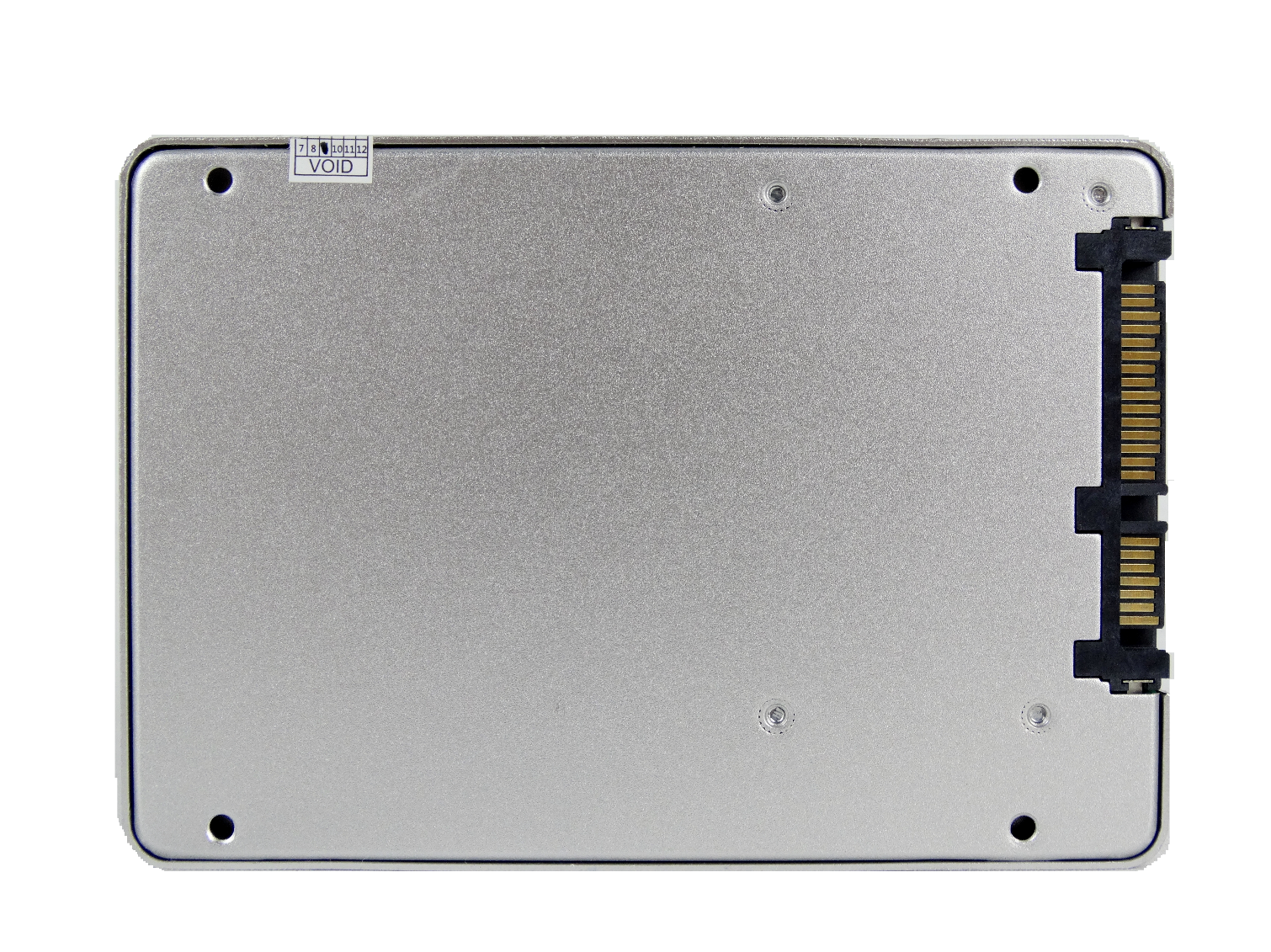
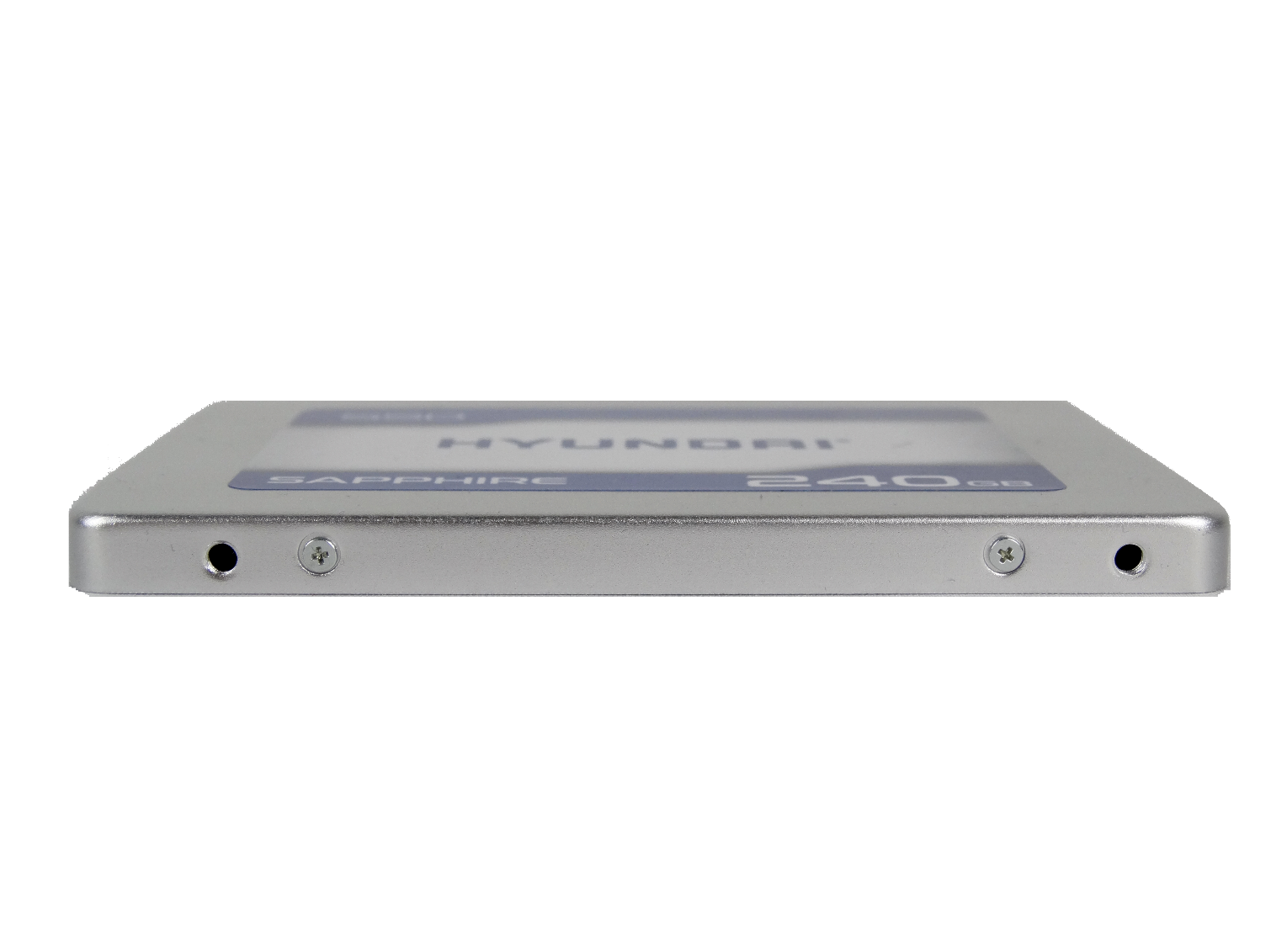
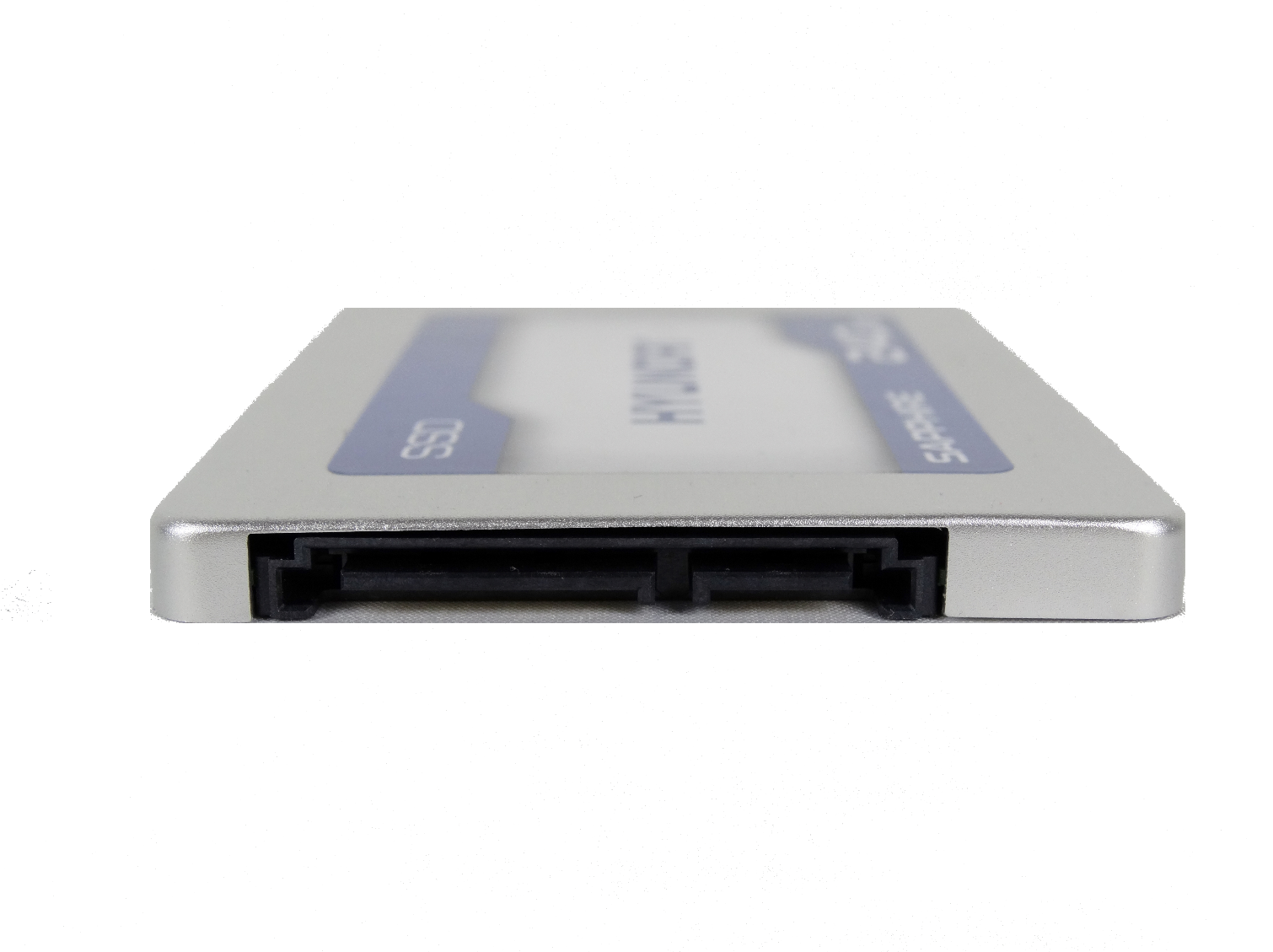
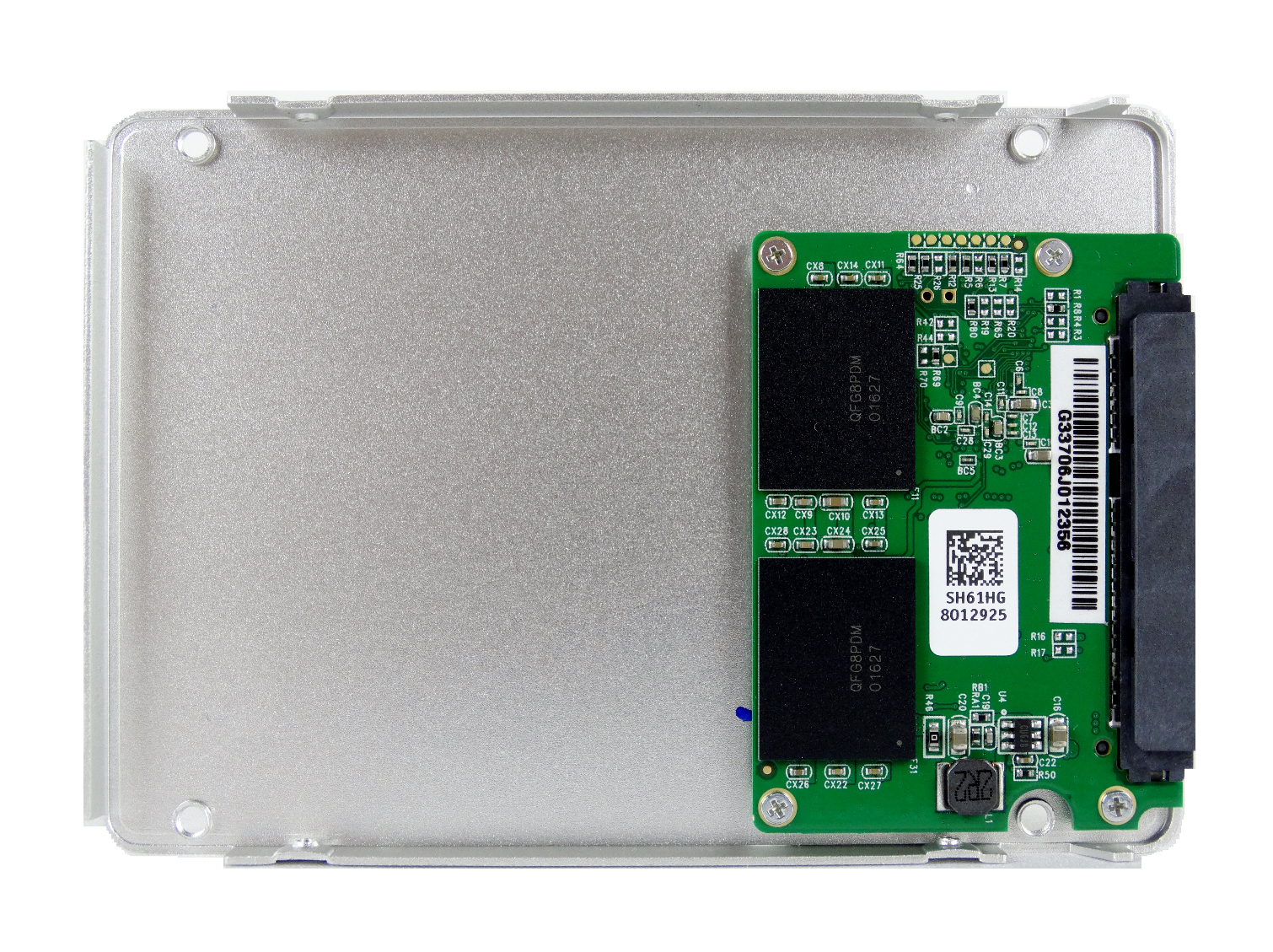
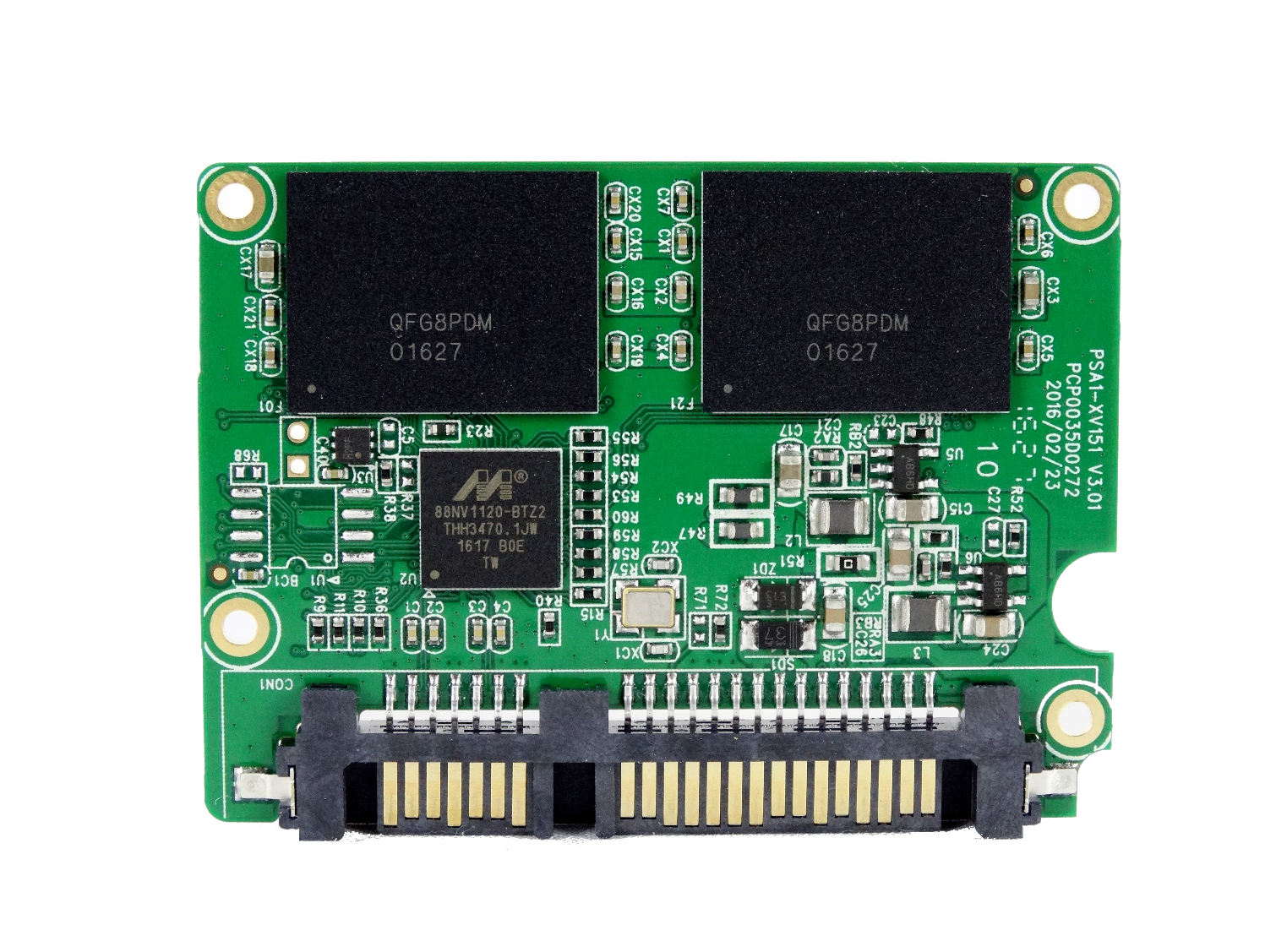
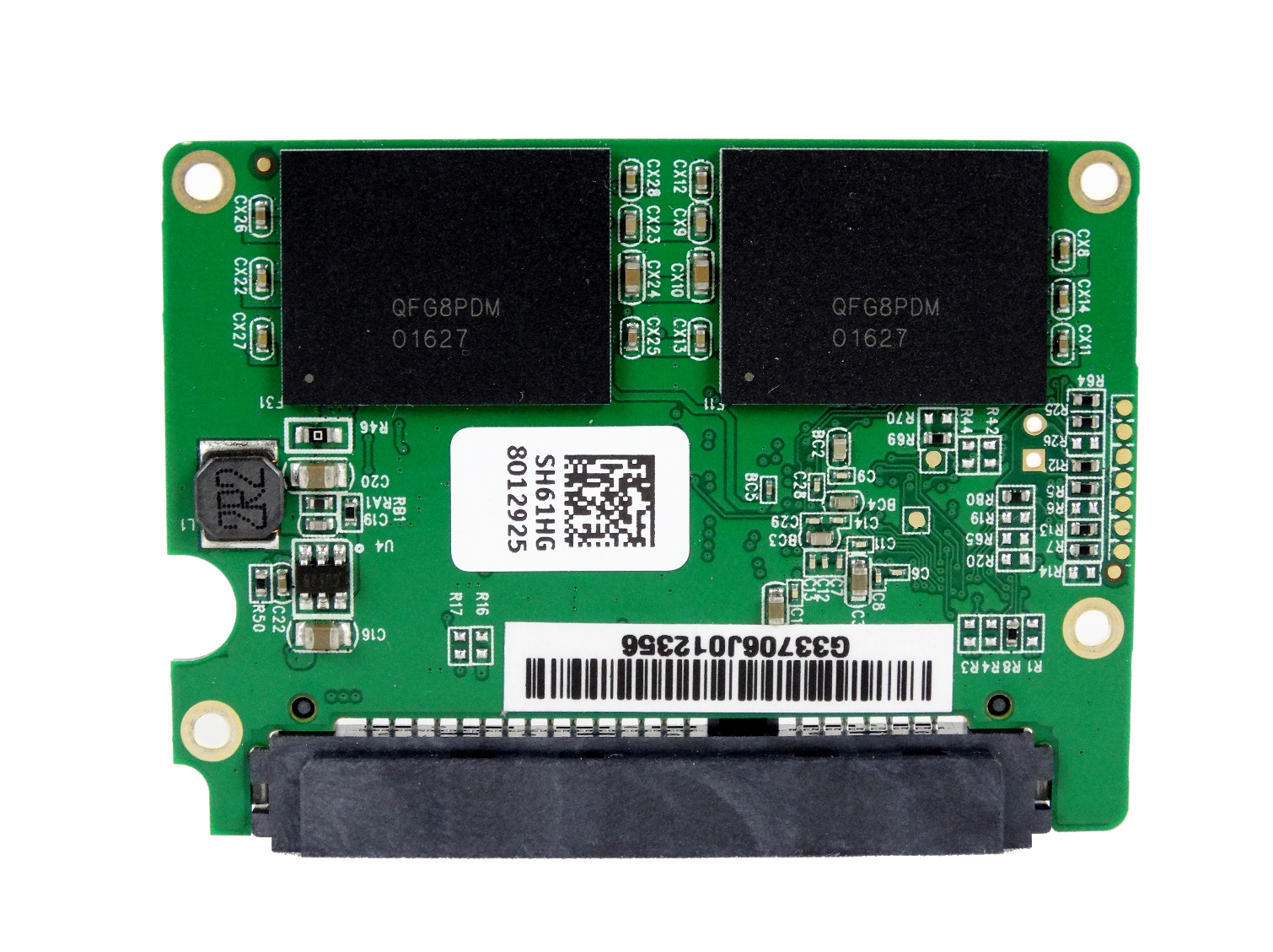
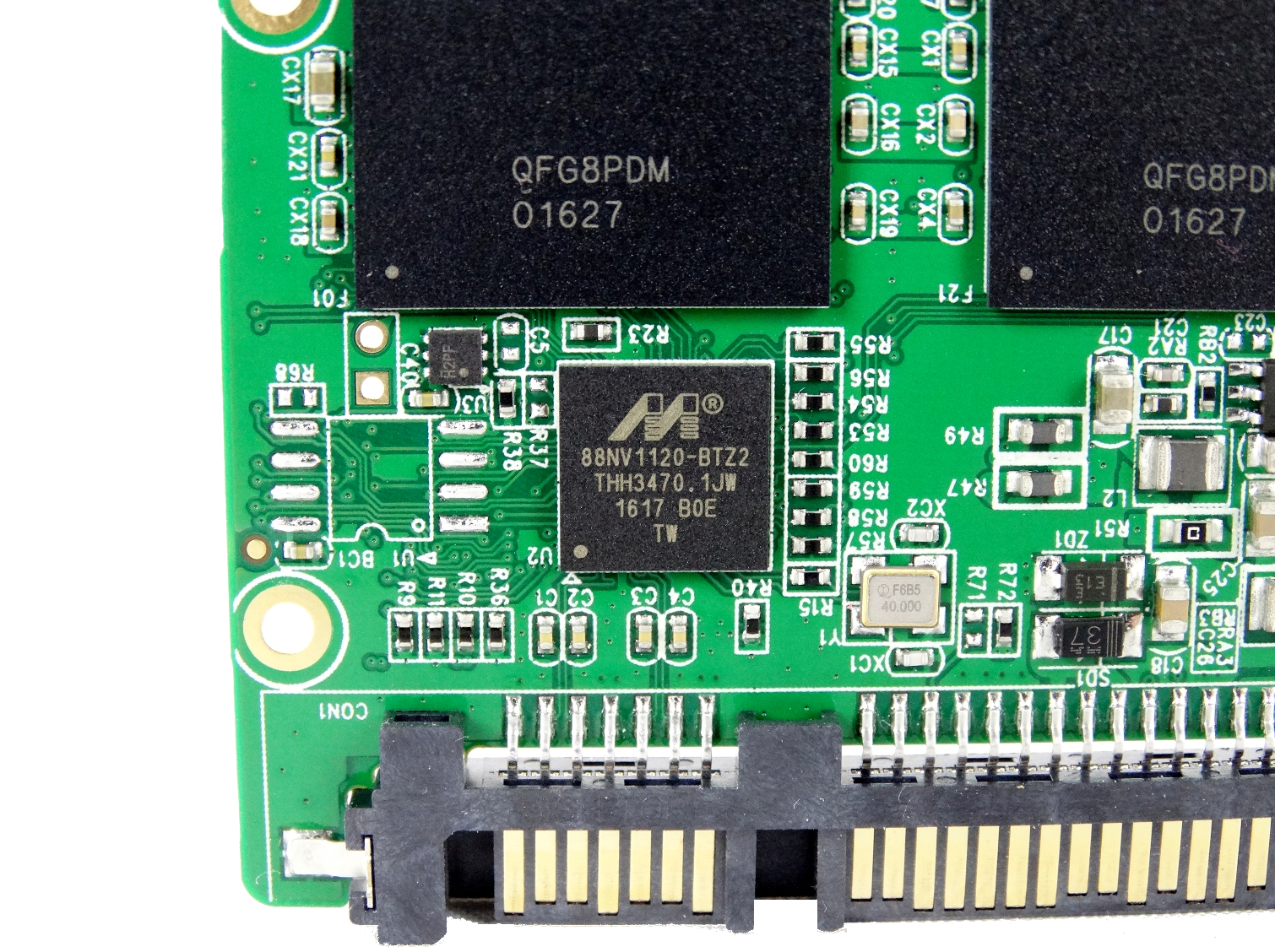
The Marvell 88NV1120 2-channel controller is tiny compared to the 8-channel controllers we often test. A third party packaged the flash, so we don't get to see the Toshiba part numbers. There are four packages total, two on each side. The drive uses all four CE per channel for maximum performance in the 240GB capacity.
MORE: Best SSDs
MORE: How We Test HDDs And SSDs
MORE: All SSD Content

Chris Ramseyer was a senior contributing editor for Tom's Hardware. He tested and reviewed consumer storage.


